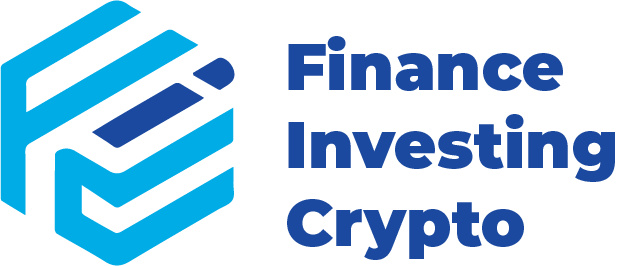Disclosure: The views and opinions expressed here belong solely to the author and do not represent the views and opinions of crypto.news’ editorial.
The web3 revolution promised a decentralized utopia where users would control their assets and data in an open, borderless digital economy. Instead, we have built a maze of isolated networks, each demanding its own wallet, gas token, and operating rules. This industry-wide fragmentation can hinder innovation and deter new users from adopting the technology. Interoperability between chains is not just a technical improvement; it is the foundational layer for the mainstream future of web3.
The current fragmentation of web3, with its multiple networks and need for diverse wallets and tokens, hinders adoption and contradicts the promise of frictionless value exchange. However, recent initiatives such as Ethereum’s ERC-7930 and ERC-7828 standards, along with the vision of a “meta-blockchain” proposed by Solana’s (SOL) co-founder, are promising steps toward unifying the ecosystem.
These and other advances promise to reduce complexity and costs, paving the way for a more seamless and interconnected user experience for a new and improved web3 generation.
Web3 is currently fragmented
The current multi-chain ecosystem is a usability nightmare. Users must manage multiple wallets, memorize different seed phrases, and navigate inconsistent interfaces just to interact with basic services.
A DeFi enthusiast might hold Bitcoin (BTC) in a hardware wallet, trade Ethereum (ETH) tokens on MetaMask, and stake Cardano (ADA) assets through Lace Wallet. Each step requires manual bridging, fee calculations, and security reviews. This fragmented experience is not just inconvenient; it is a systemic failure that contradicts blockchain’s promise of frictionless value exchange.
The problem goes beyond individual workflows because wallets, decentralized applications (dApps), and block explorers follow conflicting conventions: Ethereum uses hexadecimal addresses, Bitcoin uses Base58, and newer blockchains adopt proprietary formats. This inconsistency creates what Galaxy researchers call “asset fragmentation,” where identical tokens bridged across chains become non-fungible, confusing users and diluting liquidity.
Without standardization, web3 will remain like a Tower of Babel, where communication between chains is more akin to translation than transaction.
Transaction fees: The silent killer of UX
Cross-chain transactions impose a hidden tax through cumulative transaction fees. Users pay fees for transactions on the source chain, execution on the destination chain, and relay services. With this structure, if the user is not careful, they could incur costs exceeding the value of the assets being transferred.
ERC-20 token swaps on Ethereum can incur fees exceeding $10 during congestion spikes, while bridging between layer-2 networks adds further complexity. These costs are not only financial but also cognitive. New users must learn the commission dynamics of each chain, from Ethereum’s gas auctions to Solana’s fixed fees, creating a steep learning curve that discourages adoption.
Layer-2 solutions, such as Arbitrum (ARB) and Optimism (OP), offer partial relief by reducing commissions by up to 95%, but introduce new fragmentation, as mentioned by Solana co-founder Anatoly Yokovenko. For example, a user bridging USDC (USDC) from Arbitrum to Polygon must still navigate distinct rollup architectures, completion times, and liquidity pools, a process more like exchanging currencies at a border than enjoying a seamless experience. True interoperability requires abstracting these complexities, not just optimizing them.
Towards a frictionless cross-chain UX
The ultimate goal is not cross-chain transactions, but chain-agnostic transactions. Users should access DeFi pools, NFT markets, and DAOs through unified interfaces that abstract underlying networks. Imagine a wallet that automatically selects the cheapest chain for swaps, routes transactions over optimal bridges, and consolidates transaction fees into a single stablecoin payment, all while maintaining self-custody and security.
This level of functionality requires new technological innovations, such as DeFAI, to fully demonstrate its potential. If interchain transactions were more integrated, AI agents could already be handling most transactions in decentralized finance; however, to reach this point, there is still a long way to go.
Moreover, true interoperability requires deeper integration. Smart contracts should run cross-chain without custom wrappers, while decentralized identities (DIDs) and other dApps should be ported frictionlessly between ecosystems. Interoperability developments should focus on this path to create super wallets that facilitate the use of web3 in its entirety.
A call for collaborative innovation, with safety as a non-negotiable pillar
Interoperability should never compromise security. Cross-chain bridges remain prime targets for attacks, with more than $2 billion stolen in 2023 alone. Centralized validators and opaque code plague many solutions, betraying the decentralized spirit of blockchain. The answer lies in new cryptographic tools, such as zero-knowledge proofs, that verify cross-chain events without the need for trusted intermediaries.
The industry must adopt high security standards, ensuring that interoperability protocols meet the security guarantees of their underlying chains. For this, more cooperative initiatives must be formed to create standards, such as the Linux Foundation’s Decentralized Trust and the EEA DLT Interoperability Specification, led by Dr Weijia Zhang, a pioneer in blockchain interoperability standards.
Solving the UX crisis in web3 requires collaboration across ecosystems. Developers must prioritize interoperability in base protocols, not as an afterthought. Standardization bodies must accelerate initiatives, while users must demand interoperability from wallet and dApp providers. Either we tear down the walls between chains, or we condemn users to a future of digital border controls and cognitive overload, which hurts us all as an industry.
Interoperability between blockchains is a great unifier
The blockchain’s potential depends on interconnection, just as TCP/IP unified computer networks on the Internet, interoperability protocols can weave isolated web3 chains into a cohesive digital economy. The technical blueprints exist, from ERC-7930 address formats and “meta-blockchain”, for example. What is lacking is collective will.
As an industry, we must stop building isolated kingdoms and start laying the railroads between them. Only then will web3 transcend its niche and fulfill the promise of an open and user-centric Internet, with a user-friendly experience. The choice is clear: interoperate or stagnate.










